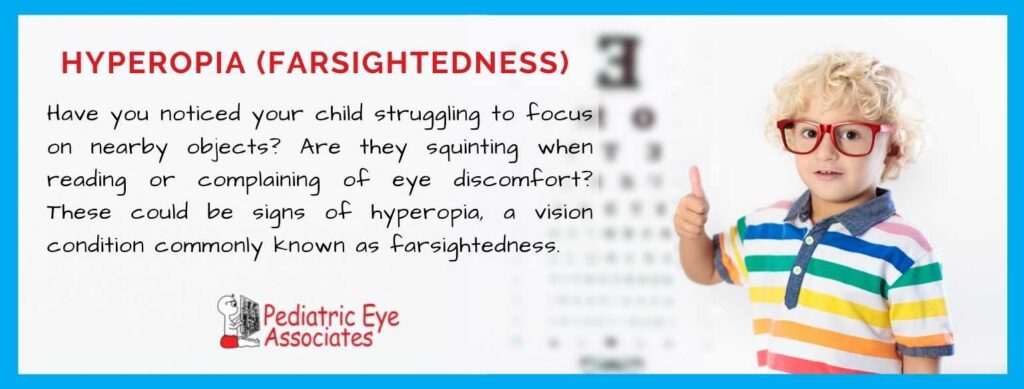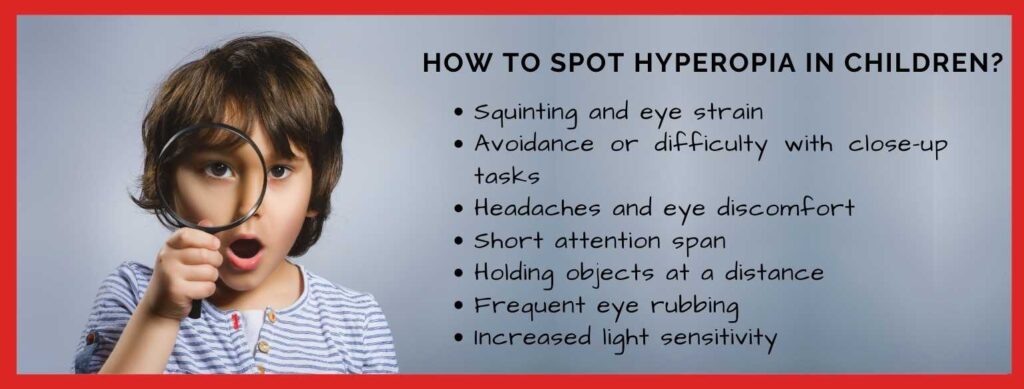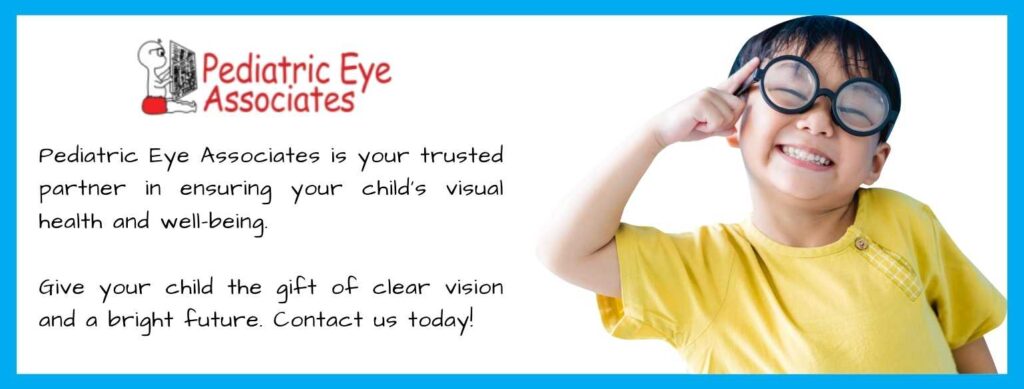Farsightedness can include struggling to focus on nearby objects, squinting when reading, or complaining of eye discomfort. Hyperopia, a vision condition commonly known as farsightedness.
In this comprehensive guide, we’ll delve into the world of farsightedness in children, exploring its causes, symptoms, diagnosis, treatment options, and proactive measures to ensure your child’s eye health.
What is hyperopia?
In children with hyperopia, the eyeball is slightly shorter than normal, causing light rays to focus behind the retina instead of directly on it. This can result in difficulty focusing on objects up close, such as books, screens, or writing.
The condition can present several signs and symptoms in children that parents and caregivers should be aware of. This includes the following:
- Squinting and eye strain
- Avoidance or difficulty with close-up tasks
- Headaches and eye discomfort
- Short attention span
- Holding objects at a distance
- Frequent eye rubbing
- Increased light sensitivity
What causes hyperopia in children?
In children, hyperopia can develop due to several factors that influence the shape and focusing ability of the eye. Genetics often play a significant role, as farsightedness can be inherited from parents. Other common causes may include:
- Abnormalities in early eye development
- Changes in the natural lens
- Environmental factors
Listen to complaints
Take your child’s complaints seriously. If they mention frequent headaches, eye discomfort, or trouble seeing things up close, it’s important to investigate further.
Regular eye exams
Schedule routine eye examinations for your child, even if they do not show obvious signs of vision problems. A comprehensive eye exam by a qualified eye care professional, such as a pediatric ophthalmologist can help detect hyperopia and other vision issues early on.
Ask teachers and caregivers
Teachers and caregivers may also notice signs of visual discomfort or difficulties in the classroom or during playtime. Keep communication lines open with them to gather insights about your child’s visual behavior.
Family history
Your child may be at a higher risk if there’s a family history of hyperopia or other vision problems. Consider discussing this with an eye care specialist during your child’s eye exam.
How is hyperopia diagnosed?
If you suspect farsightedness in your child, seeking professional evaluation is crucial. An eye doctor will conduct a comprehensive eye exam that may involve a combination of specialized exams, such as:
- Visual acuity tests involve reading letters or symbols from an eye chart to assess how clearly a child can see at different distances.
- Retinoscopy is a technique where the eye doctor shines a light into the child’s eyes and observes how the light reflects off the retina.
- An autorefractor is a machine that automatically measures the eye’s refractive error. Children can simply look into the device, and then the machine will provide an estimate of their prescription, helping the doctor diagnose hyperopia.
- The eye doctor may perform a cover test to evaluate how the eyes work together and if there is any misalignment (strabismus). This is important because hyperopia can sometimes contribute to eye alignment issues.
Remember, early diagnosis is essential to prevent potential learning difficulties and ensure proper eye development.
What are the treatment options for children with hyperopia?
So, your child has been diagnosed with hyperopia—what’s next? Some amount of hyperopia can be normal and may not require glasses. The good news is that hyperopia in children can be managed effectively. Here are some treatment options that your pediatric eye doctor may recommend:
-
Eyeglasses
Eyeglasses are a common and effective treatment for children with hyperopia. They use convex lenses to help focus light directly onto the retina, improving both near and distant vision. Eyeglasses are available in various styles and designs to suit a child’s preferences.
-
Contact lenses
Contact lenses can be an option for older children and teenagers responsible enough to handle and care for them.
Like eyeglasses, contact lenses use corrective lenses to address hyperopia. There are soft and rigid gas-permeable contact lenses available, and your child’s eye care professional can help determine the best type for their needs.
-
Bifocal or multifocal lenses
Bifocal or multifocal eyeglass lenses have different zones for near and distant vision. These lenses can benefit children with both hyperopia and difficulty focusing on close-up tasks like reading. They allow clear vision at various distances without the need to switch between different pairs of glasses.
-
Prescription changes and monitoring
Children’s eyes continue to grow and change, and their prescriptions may evolve over time. Regular visits to an eye care professional are important to monitor changes in hyperopia and make necessary adjustments to the prescription.
-
Early intervention and regular check-ups
Early detection and intervention are crucial to ensure the best outcomes for children with hyperopia.
Regular eye examinations by an eye care professional will help monitor the child’s visual development and make timely adjustments to their treatment plan.
Discover clear vision for your child at Pediatric Eye Associates
Are you looking for expert care and specialized attention for your child’s vision needs? Look no further than Pediatric Eye Associates, your trusted partner in ensuring your child’s visual health and well-being.
Our dedicated board-certified pediatric ophthalmologist specializes in caring for children’s eyes. Our comprehensive eye examinations go beyond routine check-ups. We use state-of-the-art technology and child-friendly techniques to accurately diagnose and address a wide range of vision issues, including hyperopia, myopia, astigmatism, and more.
Give your child the gift of clear vision and a bright future. Contact us today to schedule an appointment.
The material contained on this site is for informational purposes only and DOES NOT CONSTITUTE THE PROVIDING OF MEDICAL ADVICE, and is not intended to be a substitute for independent professional medical judgment, advice, diagnosis, or treatment. Always seek the advice of your physician or other qualified healthcare providers with any questions or concerns you may have regarding your health.



